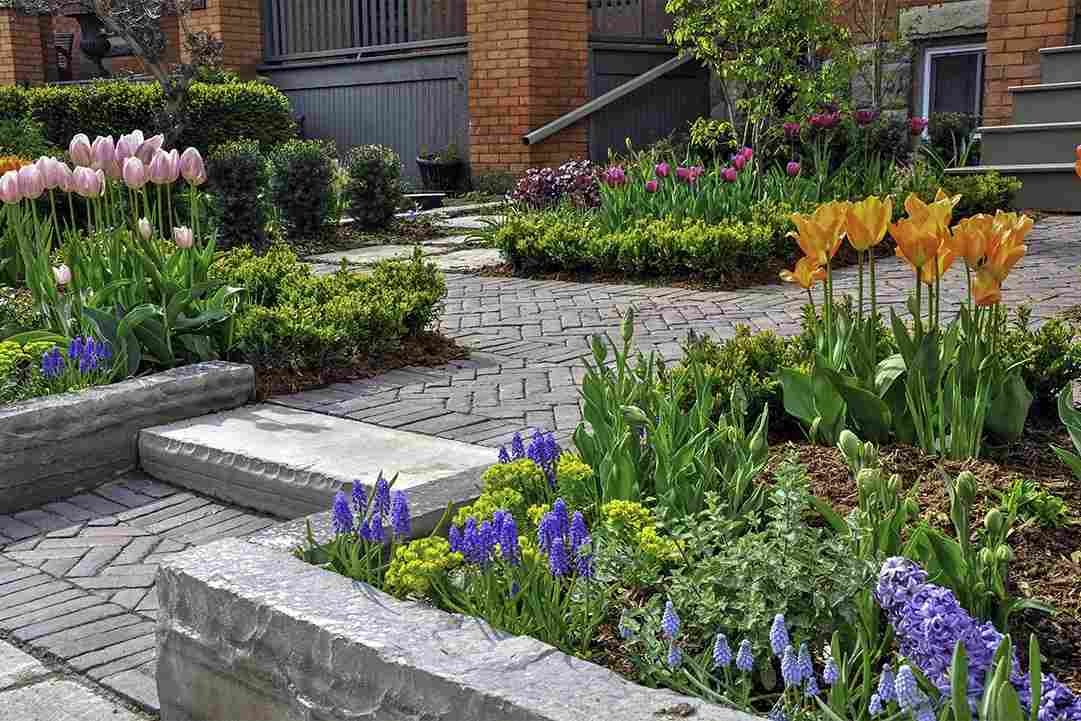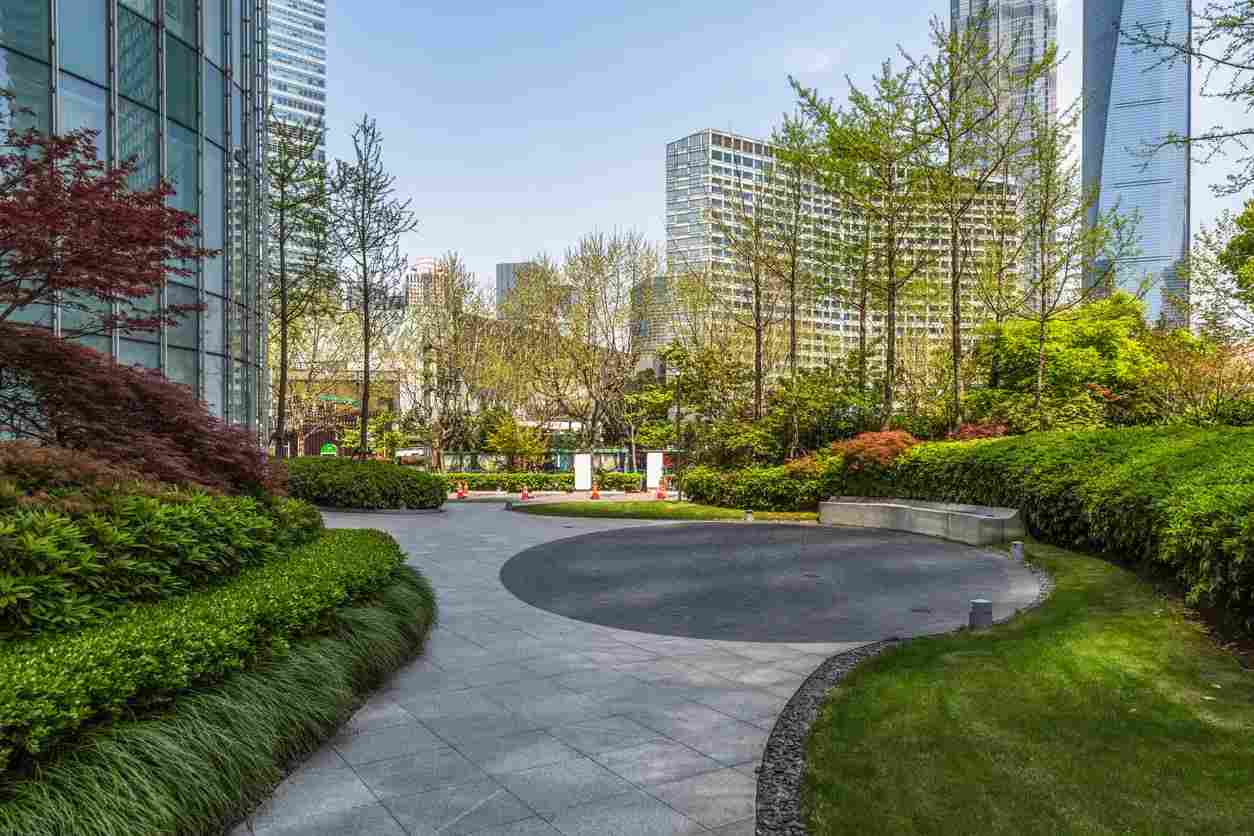Looking to enhance your outdoor space with a blend of hardscaping and landscaping? At Liberty Heritage Nursery Farm, we specialize in creating harmonious environments that seamlessly integrate natural beauty with functional design. When it comes to hardscaping—think pathways, patios, and retaining walls—it’s all about complementing the lush greenery and vibrant flora of your landscape. Consider using materials like natural stone or timber that echo the organic feel of your plants and flowers. By balancing softscape elements with well-placed hardscaping features, you can create a picturesque and inviting garden that’s both practical and aesthetically pleasing.
Understanding Hardscaping and Landscaping Integration
Hardscaping refers to the non-living elements in your outdoor area, such as stone pathways, wooden decks, concrete patios, or metal sculptures. Landscaping, on the other hand, encompasses the living elements—plants, trees, shrubs, and flowers—that bring color, texture, and life to your garden. Integrating these two components effectively involves thoughtful planning and design.
Benefits of Hardscaping Integration

Integrating hardscaping into your landscape design enhances property value, extends usable outdoor living space, and reduces maintenance. At Liberty Heritage Nursery Farm, our hardscaping services ensure expert installation of features like patios, walkways, and retaining walls, tailored to blend seamlessly with existing landscaping. Whether creating defined pathways or functional gathering areas, our team utilizes quality materials and craftsmanship to achieve durable, aesthetically pleasing results that elevate the beauty and functionality of your outdoor environment.
Enhanced Usability: Hardscaping features like patios and pathways provide functional spaces for activities such as dining, relaxing, or entertaining outdoors.
Visual Appeal:
Well-designed hardscaping can complement the natural beauty of your landscape, creating a visually appealing environment.
Structure and Organization:
Hardscaping elements can define and organize different areas of your garden, creating a sense of structure and order.
Low Maintenance:
Compared to plants, hardscaping generally requires less maintenance, making your outdoor space more manageable.
Design Principles for Hardscaping Integration
Design principles for hardscaping integration emphasize unity, balance, and functionality, ensuring that hardship escape features complement the natural landscape. At Liberty Heritage Nursery Farm, our hardscaping installation process begins with site preparation, followed by material selection and layout design. We prioritize precise installation techniques to ensure durability and aesthetic appeal, incorporating elements like pathways, patios, and retaining walls seamlessly into your garden design. Our approach aims to enhance usability and visual coherence while respecting the natural environment of your outdoor space.
1. Unity and Cohesion
Achieving harmony between hardscaping and landscaping involves creating a unified design that blends seamlessly. Consider the overall style and theme you want to achieve—whether it’s formal, rustic, modern, or eclectic—and ensure that both hardscape and softscape elements complement each other.
At Liberty Heritage Nursery Farm, we often recommend starting with a central theme or focal point that ties your hardscape and landscape together. For example, if you’re aiming for a naturalistic garden, opt for materials like natural stone or gravel that mimic the surrounding environment.
2. Balance Between Softscape and Hardscape
Balance is key to a successful design. Avoid overwhelming your garden with too much hardscaping, which can make it feel sterile or artificial. Instead, aim for a mix of softscape (plants) and hardscape elements to create a dynamic and inviting outdoor space.
One effective technique is to use hardscaping to define borders or pathways while leaving ample room for plants to flourish. This not only enhances the aesthetic appeal but also promotes biodiversity and ecological balance in your garden.
3. Consider Scale and Proportion
When integrating hardscaping features, consider the scale and proportion relative to your garden size and existing landscape. Large, imposing structures may overwhelm a small garden, while intricate details might get lost in a vast, open space.
At Liberty Heritage Nursery Farm, we advise clients to take measurements and visualize how different hardscape elements will fit within their garden layout. This helps ensure that each feature enhances rather than detracts from the overall aesthetic.
4. Functionality and Practicality
Think about how you’ll use each hardscaping feature. For instance, a patio should be located where it receives optimal sunlight and is easily accessible from the house. Pathways should be wide enough for comfortable passage and designed to lead visitors through the garden gracefully.
Incorporating practical considerations into your design not only improves usability but also enhances the overall enjoyment and functionality of your outdoor space.
Choosing Materials for Hardscaping
The choice of materials plays a crucial role in hardscaping integration, influencing both the aesthetic appeal and durability of your outdoor features. Here are some popular materials and their considerations:
1. Natural Stone
Natural stone, such as slate, limestone, or granite, adds a timeless and organic look to any garden. It blends well with natural surroundings and can withstand varying weather conditions. However, it may require periodic sealing and maintenance to preserve its appearance.
2. Pavers
Concrete or clay pavers come in various shapes, sizes, and colors, offering versatility in design. They are durable, easy to install, and require minimal maintenance. Pavers can be arranged in different patterns to create unique pathways, patios, or even decorative accents.
3. Wood
Wood adds warmth and a rustic charm to outdoor spaces. It’s commonly used for decks, pergolas, and garden borders. However, wood requires regular sealing or staining to protect it from moisture and UV damage.
4. Gravel and Pea Gravel
Gravel is a cost-effective option for pathways and driveways. It provides good drainage and is easy to install. Pea gravel, with its smooth texture, is ideal for decorative purposes and can complement both modern and traditional garden designs.
5. Brick
Brick offers a classic and elegant appearance, suitable for pathways, patios, and retaining walls. It’s durable, easy to maintain, and comes in various colors and patterns. Brick can add a sense of history and tradition to your garden design.
Practical Tips for Hardscaping Integration

Practical tips for hardscaping integration include planning for proper drainage, selecting materials that complement your landscape, and incorporating lighting for ambiance. At Liberty Heritage Nursery Farm, our landscaping services extend to expert advice on plant selection, seasonal maintenance, and eco-friendly practices. We emphasize creating a harmonious balance between hardscape and softscape elements, ensuring your outdoor space not only looks stunning but also functions efficiently and sustains its beauty over time.
Plan for Drainage: Ensure that hardscaping features are designed to manage water runoff effectively. Proper drainage prevents water pooling and potential damage to plants or structures.
Create Focal Points:
Use hardscaping elements to create focal points or visual interest in your garden. This could be a fountain, sculpture, or a well-placed seating area.
Seasonal Considerations:
Choose plants and hardscaping materials that thrive in your local climate. Consider how different seasons will impact the look and functionality of your outdoor space.
Lighting:
Incorporate lighting into your hardscaping design to extend usability into the evening hours and create ambiance. LED lights are energy-efficient and come in various styles to suit different aesthetics.
Consult with Professionals:
If you’re unsure about design or installation, seek advice from landscape designers or contractors experienced in hardscaping. They can provide valuable insights and ensure that your vision is executed smoothly.
Case Studies and Inspiration
To inspire your hardscaping and landscaping integration, let’s explore a couple of scenarios:
Case Study 1: Rustic Retreat
Imagine a garden retreat inspired by rustic charm. Begin with a central patio area made of natural stone, surrounded by a border of gravel pathways that wind through lush flower beds. Integrate wooden benches or a pergola draped with climbing vines for shade and intimacy. This design blends natural materials seamlessly, creating a cozy and inviting outdoor living space.
Case Study 2: Modern Oasis
For a more contemporary approach, envision a sleek garden oasis with clean lines and minimalist features. Use large concrete pavers or sleek metal accents to define pathways and patios. Incorporate geometric planters with architectural plants like succulents or ornamental grasses. Add subtle lighting along pathways and around seating areas for a dramatic night time effect. This design emphasizes simplicity and sophistication, perfect for modern urban settings.
FAQs
What is the difference between hardscape and landscape?
Hardscape refers to the non-living, permanent elements in a garden or outdoor space, such as pathways, patios, walls, and structures like pergolas or fountains. These features are typically constructed using materials such as stone, concrete, wood, or metal, and they provide structure, functionality, and visual interest to the landscape. In contrast, landscape encompasses the living, natural elements of the outdoor environment, including plants, trees, shrubs, flowers, and the soil they grow in, which contribute to the overall aesthetic and ecological balance of the space.
What is hard-scape material in landscape?
Hardscape materials in landscaping refer to non-living elements used to construct permanent features like pathways, patios, and retaining walls. Common hardscape materials include natural stone, concrete pavers, bricks, wood, and gravel, each chosen for its durability, aesthetic appeal, and suitability to the garden’s design theme. These materials are integral to shaping the structure and functionality of outdoor spaces while complementing the living elements of the landscape.
How do I create a landscape layout?
To create a landscape layout, start by assessing your space and considering factors like sunlight, soil type, and existing vegetation. Sketch a rough plan, dividing the area into zones for different uses such as entertaining, gardening, or relaxation. Incorporate a variety of plants, hardscaping elements like paths or seating areas, and focal points to create visual interest and balance within your design.
How do you design a functional landscape plan?
Designing a functional landscape plan involves first defining the purpose and desired activities for your outdoor space. Consider factors like traffic flow, accessibility, and maintenance requirements when placing hardscaping features such as paths and patios. Integrate a variety of plants suited to your climate and soil conditions, ensuring they enhance both the aesthetic and functional aspects of your design.
What are the 5 basic elements of landscape design?
The five basic elements of landscape design are:
Line: Lines guide the eye and create movement in the landscape, such as pathways or borders.
Form: Forms refer to the shape and structure of plants and hardscape elements, influencing the overall visual impression of the garden.
Texture: Texture relates to the surface quality of materials used, like smooth stones or rough bark, adding depth and interest to the design.
Color: Colors evoke moods and enhance the aesthetic appeal of the landscape, whether through vibrant flowers or subtle foliage tones.
Scale: Scale refers to the size of elements relative to each other and the overall space, ensuring a harmonious and balanced composition.
Conclusion
Integrating hardscaping with landscaping is a creative endeavor that can transform your outdoor space into a functional and beautiful retreat. By considering design principles, choosing appropriate materials, and incorporating practical tips, you can create a garden that reflects your personal style while enhancing the natural beauty of your surroundings. At Liberty Heritage Nursery Farm, we’re passionate about helping you achieve a harmonious balance between hardscape and softscape elements, ensuring that your outdoor space becomes a place of enjoyment and relaxation for years to come.
